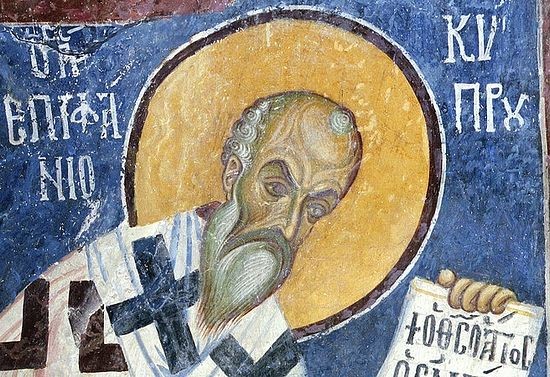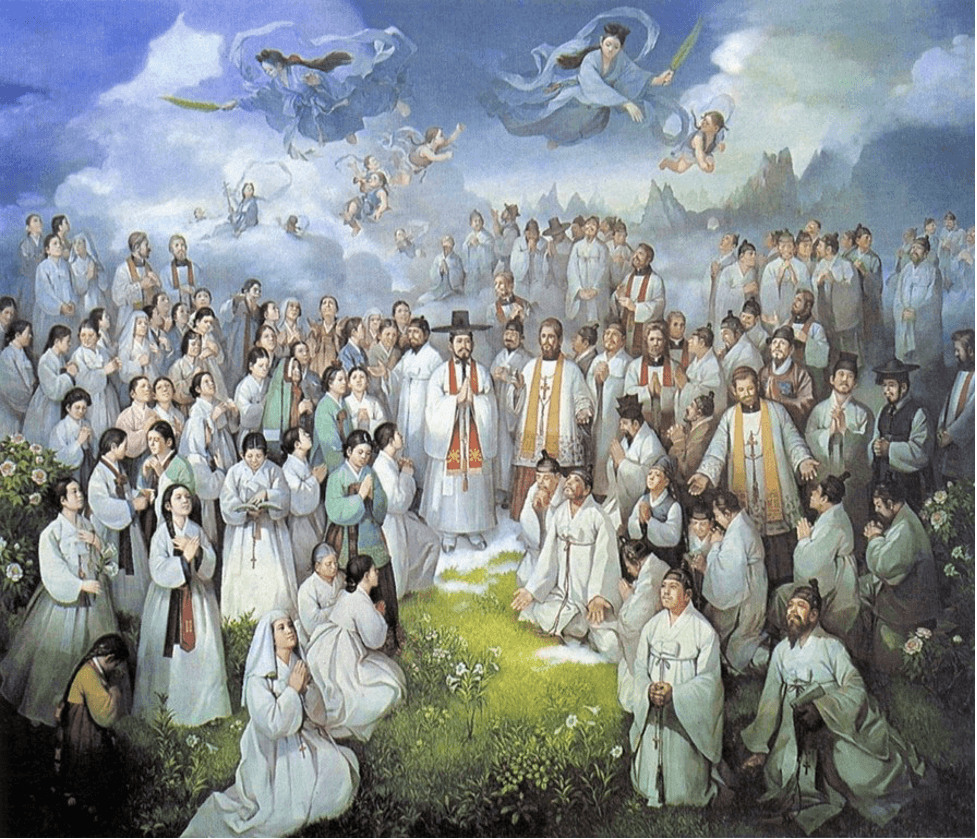– Anastasios
Epiphanius was born on 310 in Palestine. He was a monk since a very young age and founder of monasteries. He was elected Bishop of Salamis (Cyprus) because of his great holiness. He defended orthodoxy in every way. He had some disagreements with St John Chrysostom by the instigation of other people, but then he saw that was wrong. He died in the year 403.
Among his most important works are Panarion (meaning an antidote for those that were bitten from the snake of heresy), Ancoratus, On the Twelve Gems. P.G. Franceschini, in his Patrology Handbook, is quite harsh on Epiphanius: “Saint Epiphanius was more traditionalist than speculative: his style, despite make him known for his vast erudition, is shabby and boring. In vain you will look in his works for a critic, and when he based his opinions on traditions, very often he showed to be too easy in believing and neglected in assessing correct traditions from the ones that are not correct” [author’s translation]. As I have said, the judgment is quite strong but the life and works of Epiphanius still deserve a certain attention.
In the Catholic Encyclopedia we find this comment about his works: “In theological matters Epiphanius teaches the doctrine of the Catholic theologians of his time. In the vocabulary of Trinitarian theology he conforms to the language of the Greek Church. He speaks of three hypostases in the Trinity, whereas the Latins and the Paulicians of Antioch speak of one hypostasis in three persons. At bottom it was a mere matter of words, but for some time it occasioned theological dissensions. Ephiphanius clearly teaches that the Holy Ghost proceeds from the Father and the Son. The doctrine that the Holy Ghost proceeds from the Father only prevailed later in the Greek Church. This teaching cannot be traced to Epiphanius (Ancoratus, 8). With regard to the constitution of the Church, he is one of the most explicit of the Greek theologians concerning the primacy of St Peter (Ancoratus, 9; Haer., lix, 7). Two passages on the Eucharist are famous because they are among those which most clearly affirm the “Discipline of the Secret.” The ”Secret” was purely pedagogical and often neglected, consisting in grading the doctrinal initiation of catechumens and in not speaking before them of the Christian mysteries save in deliberately vague expressions. Hence the necessity of explaining the words of Epiphanius on the Eucharist (Ancoratus, 57; Haer., xlii, 61). In these two passages, instead of quoting the words of the institution of the Eucharist, the author gives these: “Hoc meum est, hoc.” Epiphanius is one of the chief authorities of the fourth century for the devotion to the Blessed Virgin. He expresses himself on the subject in connection with two heresies, of which one diminished, while the other exaggerated, this devotion (Haer., lxxviii, lxxix). A circumstance of his life is well known in the history of images, namely the destruction of an image in the church of Bethel (Letter to John of Jerusalem in P.G., XLIII, 390).”
The same article goes on speaking about the character of Epiphanius: “His character is most clearly shown by the Origenist controversies, which demonstrated his disinterested zeal but also his quickness to suspect heresy, a good faith which was easily taken advantage of by the intriguing, and an ardor of conviction which caused him to forget the rules of canon law and to commit real abuses of power. He saw in Origen the chief cause of the heresies of his time, and especially of Arianism. He was particularly opposed to his allegorical method, his doctrines concerning the Son, in which he saw the subordination of the Son to the Father, his doctrines concerning the pre-existence of souls and the resurrection (Ancoratus, 54, 62; Haer., lxiv). He did not confine himself to this condemnation of Origen. He reproached the monks and bishops of his time with accepting the Origenist errors. Thence resulted at the end of his life the conflict with John of Jerusalem and with St John Chrysostom. Apart from the injustice of the controversy, he encroached on the jurisdiction of these bishops. He was made use of by Theophilus of Alexandria, the irreconcilable enemy of Chrysostom. The chief sources relative to this controversy are: St Jerome, Contra Joannem Hierosolymitanum in P.L., XXIII, 355; Idem, Ad Theophilum in Pl L., XXII, 736; Epiphanius, Ad Joannem Hierosolymitanum in P.G., XLIII, 379; Socrates, Church History VI.10-14; Sozomen, Church History VIII.14-15. The chief editions of Epiphanius’s works are those of Petavius (Paris, 1622); Greek text, Latin tr., and notes reproduced with additions in P.G., XLI-XLIII; and of Dindorf (Leipzig, 1859-62), 5 vols., giving only the Greek text, improved in some parts” (Saltet, L. (1912). “Epiphanius of Salamis.” In The Catholic Encyclopedia. New Advent: http://www.newadvent.org/cathen/13393b.htm).
So, in a certain way, he was a quite controversial figure but his personal life and actions witnessed of his love for the Church and of his love for God.


 Follow
Follow


